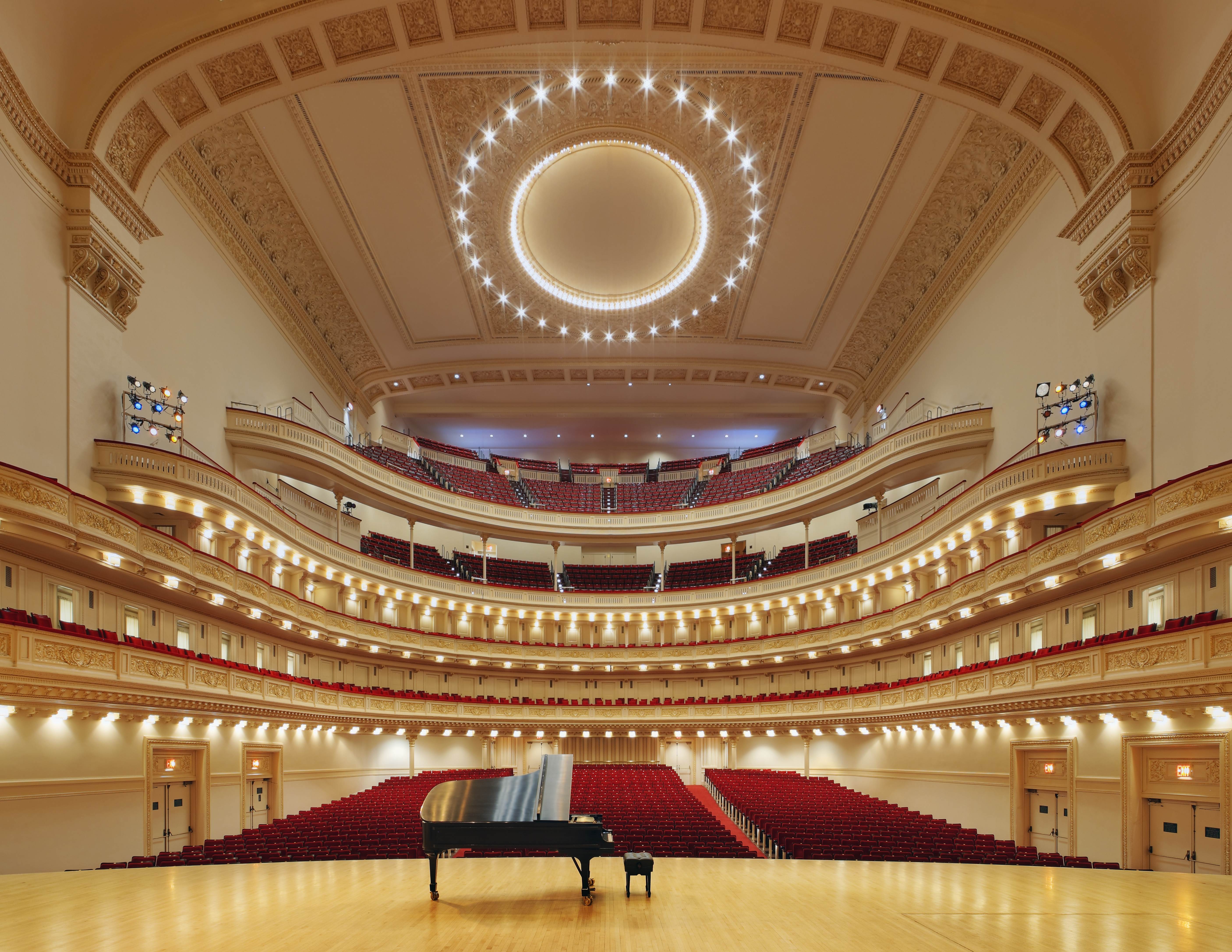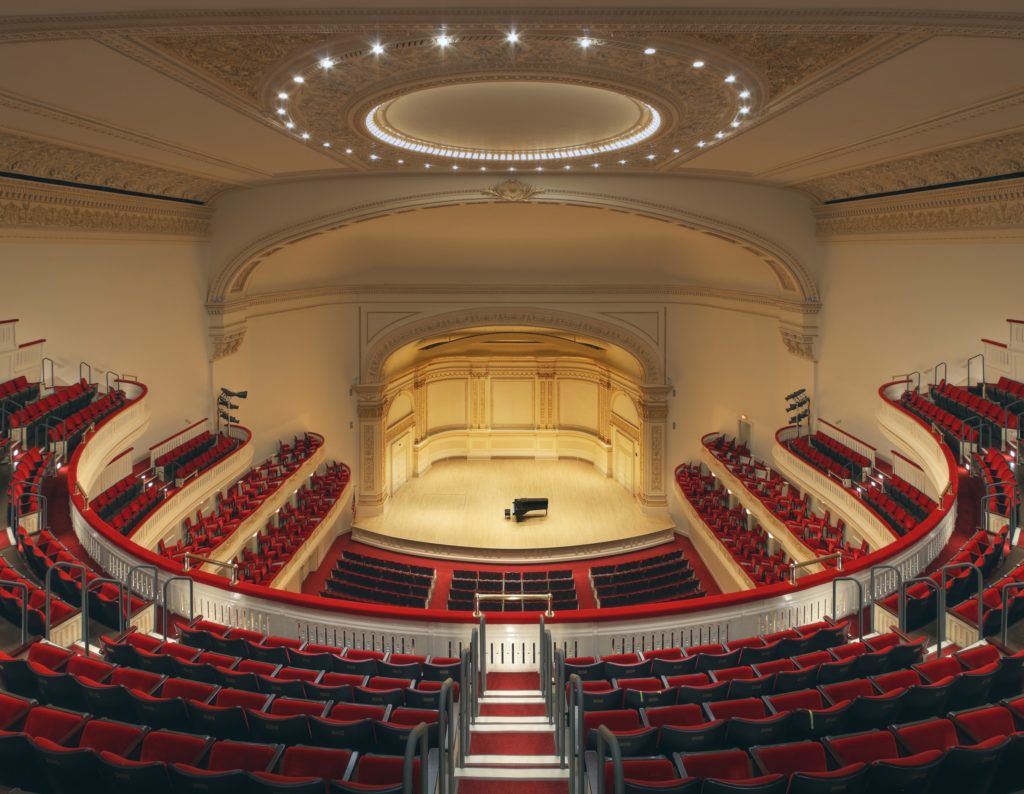Recently, some veteran musicians played in Carnegie Hall for the first time. They are woodwind players, and friends of mine. They had attended concerts in the hall many times, but had never before played in the hall.
It’s a fine experience, acoustically, to listen to music in Carnegie Hall. But to play in the hall? Even better, said my friends. I asked them to tell me about the experience.
They had a rehearsal and a concert. At the rehearsal, there came a moment when the players in the ensemble released a note, before a long rest. “The hall sang back to us,” reported one of my friends. The players looked at one another and went, “Whoa.”
This same friend explained the following: There are two types of hall, basically. There are ones with plenty of reverberation. These halls tend to be echo-y and swallow-y. Kind of soupy. Then there are halls that are clear and crisp—but these tend to be dry. Carnegie? The best of both worlds. The hall is reverb-y, but not soupy. It is clear and crisp, but not dry.
“The hall hugs you,” said my friend.
Another friend noted this: You can hear one another, in an ensemble. Everything is perfectly clear. This must aid musical cohesiveness.
This same friend had another observation: “In the past, I thought that certain woodwind players played certain solo passages too loud.” He was talking about top players, in the Vienna Philharmonic, for example. “But now I know better. In Carnegie Hall, even a pianissimo may seem loud and clear.”

To my friends—my sources!—I posed a question: Did the acoustics change, once people were in the hall? Was there a difference between sound during the rehearsal and sound during the concert, when an audience was present? Their answer: no.
One of my friends had something very interesting to say about listening versus playing: the difference between attending a concert in the hall and playing a concert. Listening is like knowing a person casually—saying hello to him. Playing is like getting to know that person very, very well.
For about 25 years now, I have noticed something. I’ve had a recurring experience—which I will now relate.
I hear my last Carnegie Hall concert of the season in May, possibly June. Over the summer, I am in other halls. I attend my first Carnegie concert of the season in late September, or early October. And I am amazed—amazed by the sound. The superb quality of the acoustics. Then, as the season continues, I get used to it, perhaps taking the sound for granted. I am a fish that doesn’t know it’s wet.
All right, a question: Are the acoustics of Carnegie Hall an accident? An example of serendipity? Or are they by design? The result of science? I know nothing about the subject—but I lean toward serendipity. Otherwise, why couldn’t other people, other halls, simply follow suit?
Long ago, I interviewed Mariss Jansons, the late, great conductor, and he made a point about acoustics and halls: You shouldn’t bother trying to tweak a hall, he said. You should not bother renovating it. Just tear it down and build another one. And often, Jansons said, if I remember correctly, the tearing down and building anew costs no more than the tweaking and renovating.
David Geffen Hall, at Lincoln Center—previously Avery Fisher Hall, previously Philharmonic Hall—is being renovated and will reopen for business this coming season. I’ll be all ears, like others. But the important thing, ever and always, is the quality of the music and playing (or singing), not the acoustics. Although the subject of acoustics can be fascinating.
Before I go, I want to recommend a piece, an appreciation, by Manuela Hoelterhoff, written last month. In the 1980s, they gave her a Pulitzer Prize—and they didn’t give it to her for nothin’, believe me. She is inimitable. Here is the opening paragraph of that appreciation:
Sheila Nadler (Ida! to her closest friends) passed away on June 25 at the age of 82 having avoided salad her entire life. I knew the end was near when even a large bag of Reese’s peanut butter cups failed to rouse the usual smile of delight. Her favorite meal consisted of two helpings of mac and cheese washed down by a tall glass of vodka with very little ice. Tuna melt would do in a pinch. Astonishingly, she never got large.
The article in full is here.

